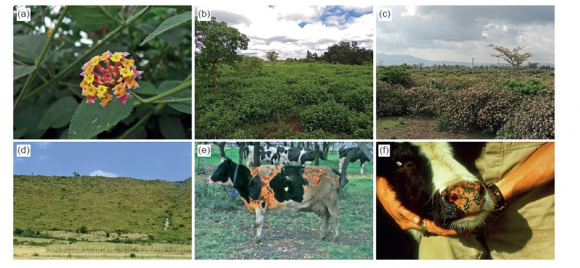4 February 2019 | By Ross Shackleton
Understanding the trade-offs of invasive alien species for people’s livelihoods and the environment is becoming more prominent to help guide management and to avoid conflicts. One way of framing these benefits and costs are as ecosystem services and disservices.

A study examined people’s knowledge and awareness of listed invasive species that were present in their gardens and the services and disservices they provide in the context of four arid land villages in the Kalahari region. This paper formed part of a special issue on “Ecosystem Services in Dryland Systems of the World” which was published in the Journal of Arid Environments. The study was conducted by Ross Shackleton (former C·I·B PhD student and post-doc) and Sheona Shackleton, Deputy Director of the African Climate and Development Initiative at the University of Cape Town and member of the C·I·B’s Steering Committee.
The study found that local villagers had a good historical knowledge of the introductions and pathways for most of the 13 identified non-native plants. Thirteen different goods and services from the listed invasive plants were recognised, the most common being shade, aesthetics and fuelwood provision which represent supporting and regulating services, cultural services and provisioning services. Some species, such as white mulberry (Morus alba) and prickly pear (Opuntia ficus-indica), were important for fruit, while eight species were mentioned as being used for fodder.

Respondents also mentioned that prickly pear, prosopis (Prosopis spp.), lead trees (Leucaena leucocephala) and syringa (Melia azedarach) imposed ecosystem disservices. These disservices included reductions in water supply, damage to buildings and human health impacts. Three quarters of households had one or more invasive species in their gardens, highlighting their importance for local residents Some of these species were also noted to be spreading beyond homesteads in settlements and into rangelands – and were perceived as a higher threat than those that were not spreading. In the harsh climatic conditions of the Kalahari most residents felt that many species would not be able to spread and were therefore not a threat.
“Understanding the roles of invasive species in people lives, especially in areas with harsh environmental conditions like the Kalahari, can really help to prioritise future management efforts to ensure that benefits are not lost and that disservices are reduced” states Ross Shackleton. “This kind of work can also help to understand people’s motivations to have some invasive species but want to manage others, which can aid with targeted awareness raising and policy development” he adds.
Read the full paper
For more information, contact Ross Shackleton at rtshackleton@gmail.com


